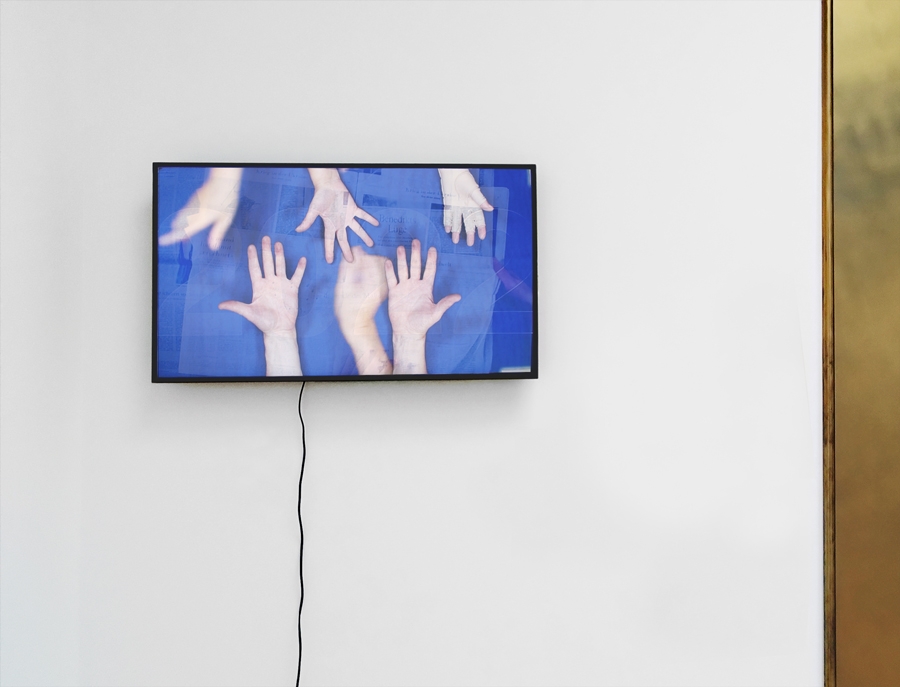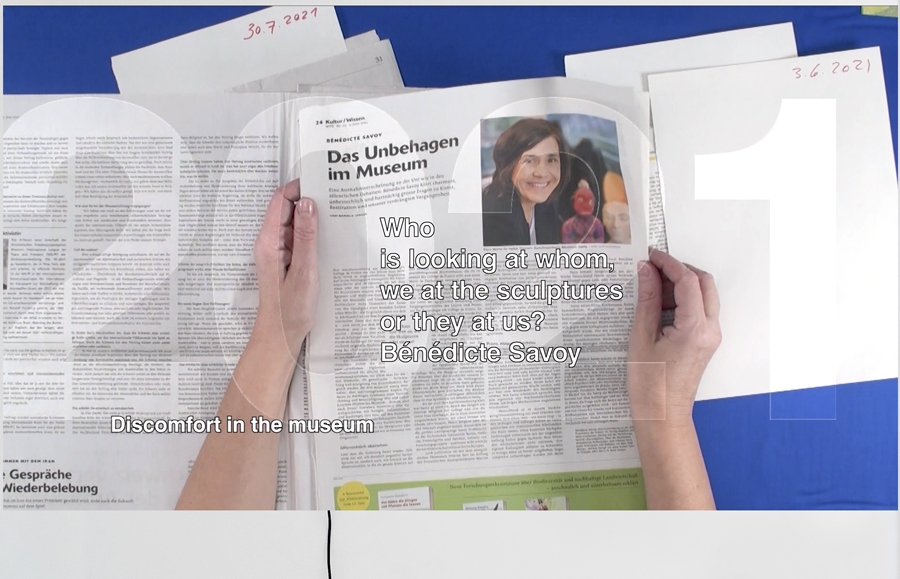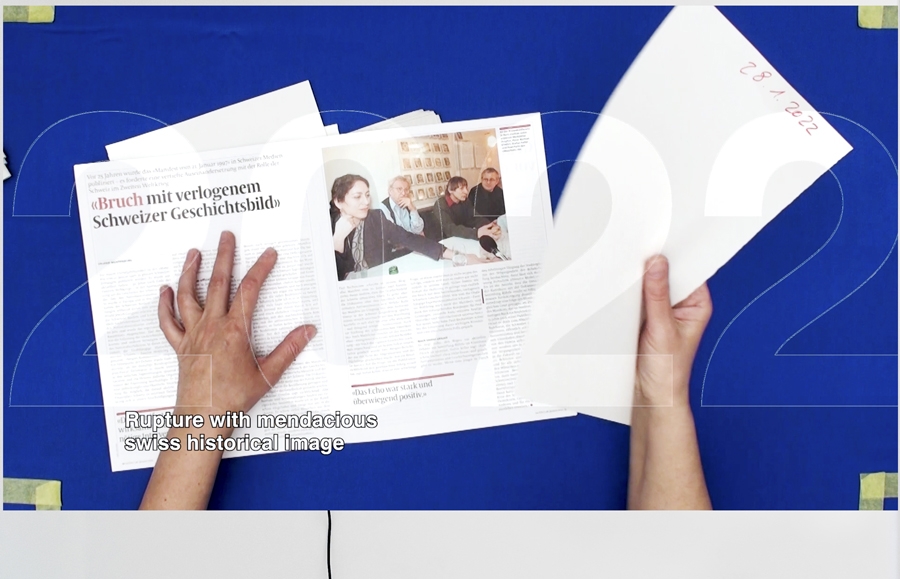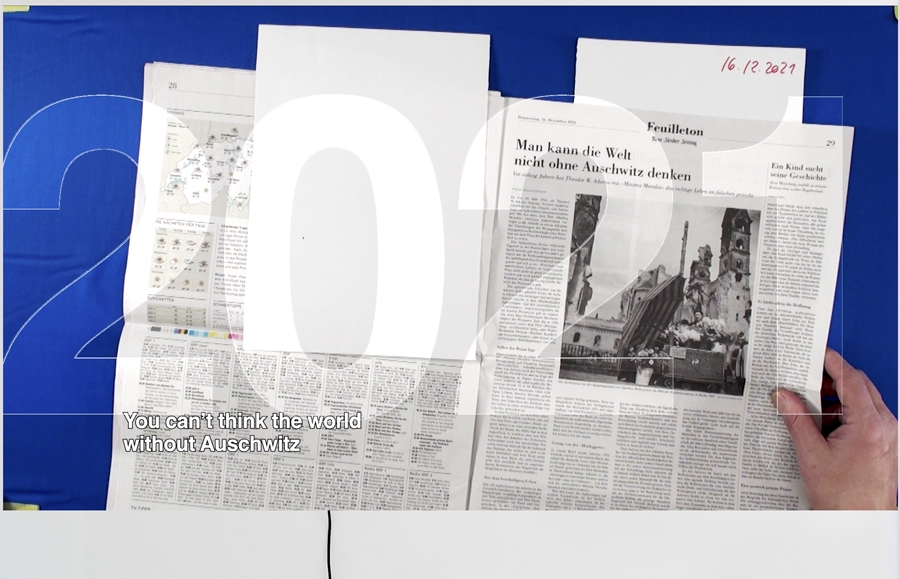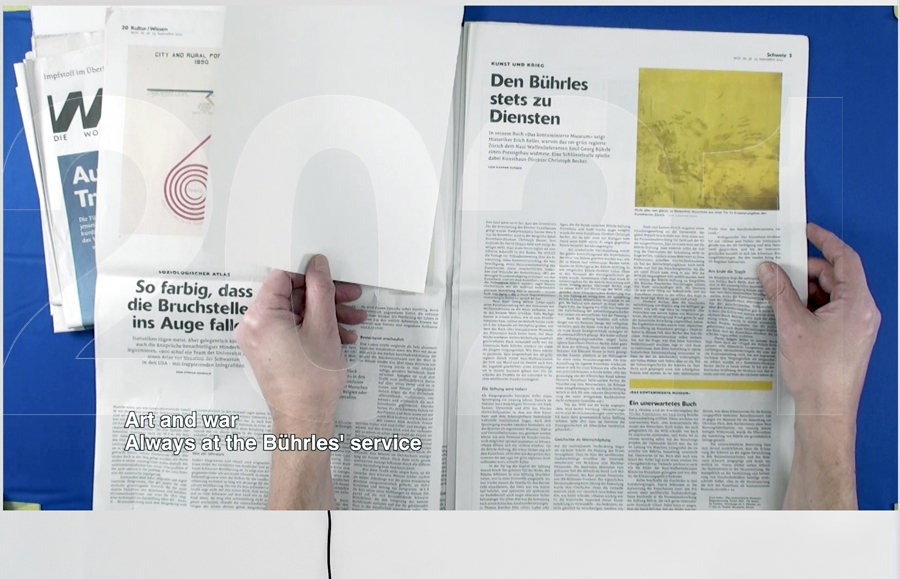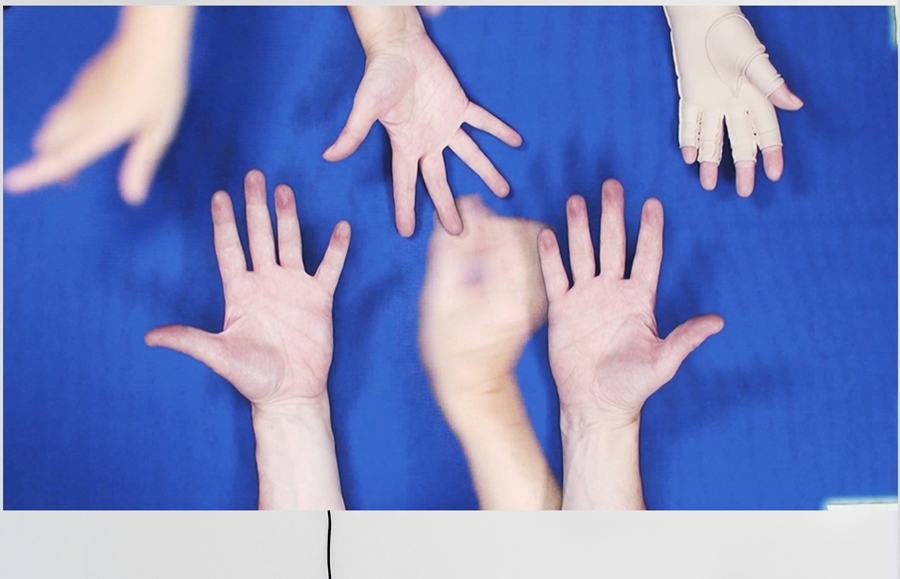2023newspapers
video description E
Video Beschreibung D
NEWSPAPERS, Articles on Provenance, Bührle Complex + Kunsthaus Zurich, 8/2015 - 3/2023
Video in: A Future for the Past. The Bührle Collection: art, context, war and conflict
Kunsthaus Zurich, 3.11.2023 – 31.12.2024
The video focuses on the role of the industrialist arms dealer and art collector Emil Bührle and his entanglements with the Kunsthaus Zürich. NEWSPAPERS (video: 14 min. 43 sec.) shows articles about the Bührle complex, browsing through newspapers between 2015 and early 2023. It reflects the public debates and conflicts surrounding the problematic provenance of this art collection, which was not independently investigated until 2023, and also calls into question the image of a neutral Switzerland during the Second World War.
RELAX is interested in the provenance research of artworks as an active component of art history as led by researcher Lynn Rother: investigating the Eurocentric vision and structural violence emanating from museums, it has the forensic aim of tracking down institutions, people, objects and money.
The video is shown in the exhibition "A Future for the Past. The Bührle Collection: art, context, war and conflict". The Kunsthaus has announced the third part of the exhibition for summer 2024, to present the final report by historian Raphael Gross (a member of the Limbach Commission) who is assessing the provenance reserach of the Bührle collection.
The exhibition has been predominantly criticized in the media since its opening. The media reports widely acknowledge that the highly problematic history of the Bührle collection is presented in detail. However, the scientific advisory board appointed by the Kunsthaus Zürich resigned in protest around two weeks before the exhibition opened. In an interview with the media, the six-member advisory board gave two reasons for this: the creation of the Bührle collection is not discussed in the context of the Holocaust and the theft of art by the Nazi dictatorship. And the narrative continues to focus primarily on Emil Bührle. The counter-narrative about the former owners, especially the Jewish collectors, their history as members of the modern civil society of the early 20th century and the stories of art theft and forced sales in the course of emigration, exile and extermination are still missing.
